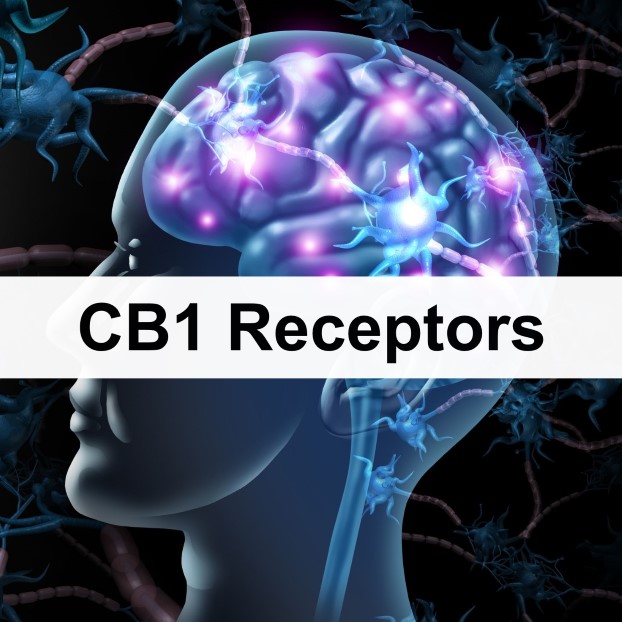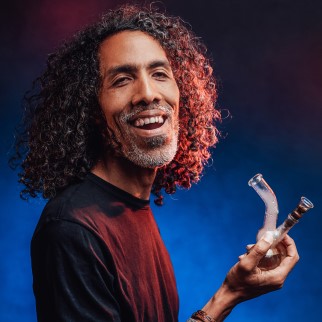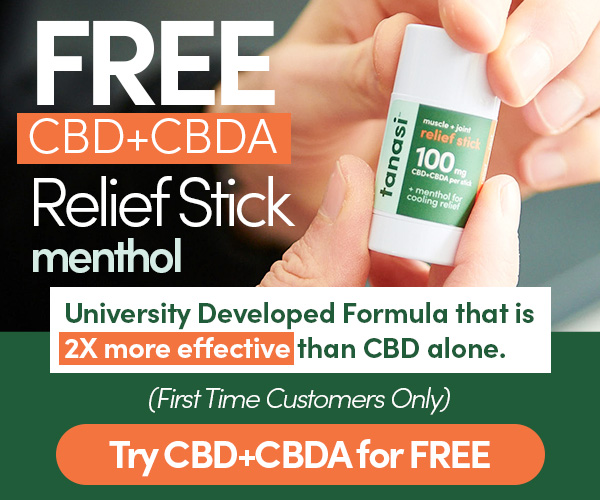CB1 Receptors – A Closer Look At Their Role

Posted on November 28th, 2020
Most cannabis enthusiasts agree that exploring how these compounds often found in plants work in the human body is absolutely fascinating. In the past few decades, extensive research has uncovered a few mysteries behind why cannabis creates varying psychoactive and therapeutic effects in our bodies.
At the end of the day, it comes down to the ECS or endocannabinoid system. Cannabinoids such as cannabidiol (CBD) and tetrahydrocannabinol (THC) do seem to have therapeutic effects. The body’s own endocannabinoid system and its interaction with said cannabinoids being responsible for them.
The ECS is integral to numerous physiologies in mammals and is responsible for a range of bodily functions. Those include pain modulation, sleep, metabolism, memory, appetite, anxiety, immune response, etc.
The endocannabinoid system consists of two primary receptors, CB1 and CB2, each triggering different effects in response to cannabinoids. This article will take a closer look at the CB1 receptors specifically, where to find them, and their impact. But let’s ask a question before going fully at it: do you know exactly what cannabinoids are?
What Are Cannabinoids?
Cannabinoids are compounds prevalent in cannabis or hemp that are also present inside the human body. Yes, the human body does indeed produce its own cannabinoids, and these go by the name ‘endocannabinoids.’ An example is anandamide, which researchers deem ‘the bliss molecule.’ The body produces such said compounds on demand.
On the other hand, cannabinoids produced by plants are ‘phytocannabinoids.’ These include the commonly known CBD and THC, as well as the lesser-known such as CBG, THCA, CBGA, CBC, CBN, THCV, etc. Interestingly, both endocannabinoids and phytocannabinoids interact with the same structures; the CB2 and CB1 receptors spread throughout the body.
CB1 Receptors And The ECS
Before taking a more in-depth look at CB1 receptors, you need first to understand the endocannabinoid system. It was discovered in the 90s by scientists who were researching the effects of cannabis on the human body. The name actually comes from the cannabis plant, and it’s an extensive network that extends throughout our bodies, even reaching our brains.
The endocannabinoid system (ECS) is a collection of specialized lipids, cannabinoids, and enzymes. The whole structure works together to help your body respond to external conditions and react accordingly. As hinted earlier, the ECS does play a role in various bodily functions. From sleep, pain, inflammation, appetite, stress levels, digestion, anxiety, mood, to memory, and more.
Even though only recently discovered, cannabinoid receptors do seem to play a vital role in the human body. When activated by cannabinoids such as CBD and THC, they influence how the body regulates itself. Currently, there are two known primary cannabinoid receptors, CB1 and CB2. Both of which have different, albeit related roles in the human body.
Molecules like cannabinoids and terpenes fit into specific receptors within the endocannabinoid system. According to scientists, compounds like tetrahydrocannabinol activate particular cannabinoid receptors, like CB1 receptors. These receptors function as a lock and key when interacting with cannabinoids.
The endocannabinoid system ideally produces its own cannabinoids, and this is the reason for its existence in the first place. But sometimes that is not enough. In those cases, you may need to supplement; and that is where CBD products and cannabis may be helpful. Eating, vaping, and drinking CBD products is one way to have your ECS flooded with external cannabinoids.
Consuming terpenes, cannabinoids, or other compounds that bind with those receptors is effectively supplementing the ECS. Just as you would with your vitamin and mineral level.
CB1 Receptors And Cannabis
A research study conducted in 1992 reported that the endocannabinoid system produces an endocannabinoid known as anandamide. Anandamine binds to CB1 receptors, which are prevalently present in the brain as well as in the nervous system.
CB1 receptors were discovered in 1990, followed by CB2 receptors in 1992. Scientists believed that these receptors did effectively initiate varying signaling mechanisms. Though they are both cannabinoid receptors, they express themselves in entirely different ways. That includes how they appear in different regions of the body.
When it comes down to affinity, the brain’s CB1 receptors are very responsive to THC, which is the reason it might yield powerful psychoactive effects. These are predominantly in the glands, brain connective tissues, the CNS, and related organs. This happens to be the primary reason why taking cannabis strains with high THC levels does get you ‘high.’ Thus, while it does give a potent psychoactive effect to the user, it also delivers incredible pain relief as well.
What Are CB1 Receptors?
CB1 receptors mostly locate around the brain and nerve cells on the spinal cord. That is how cannabinoids gain the ability to create effects that impact memory and pain. However, these receptors also make their way to other tissues and organs.
Like the spleen, white blood cells, endocrine glands. Also, parts of the gastrointestinal, urinary, and reproductive tracts are some of the other odd places researchers spotted CB1 receptors. In addition to their pain and memory effects, these receptors influence sleep and appetite. Since they’re primarily in the brain, they’re also responsible for the psychoactive effects you would feel after consuming THC-rich cannabis.
When consumed, cannabinoids from cannabis bind with the CB1 receptors, which in turn transmit signals throughout the body. Cannabinoids are capable of providing much-needed relief to individuals suffering from a wide range of medical conditions. The cannabinoids enter the body and activate specific receptors distributed naturally throughout it.
CB1 receptors’ primary role is to help regulate memory, pain, appetite, and sleep. When exposed to cannabinoids from the hemp or cannabis plant, they further boost their effect.
The Importance of CB1 Receptors
As mentioned earlier, cannabinoids help coordinate or regulate many things you feel and think. Similar to how a key fits into a lock, the cannabinoids match or, rather, bind with receptors. When they link, the interaction stimulates the receiving receptor into action. This triggers a set of events that passes the message along and does a number of cellular responses. Ultimately, these responses will encourage homeostasis as well as helping bodily functions run properly.
CB1 receptors’ labor does actually look to inhibiting the release of neurotransmitters. According to studies, they inhibit voltage-gated calcium channels as well as adenylyl cyclase. This results in a reduction in neurotransmitter release and excitability. Research suggests that the reason for the anticonvulsant and psychoactive cannabinoids action is probably because of these effects. Research also shows that the consumption of cannabinoids leads to the inhibition of serotonergic, noradrenergic, cholinergic GABAergic, and glutamatergic neurotransmission in areas of the CNS.
As already established, CB1 receptors mediate neurotransmission inhibition. Other studies have shown the inhibition of cholinergic, adrenergic as well as sensory neuroeffector. In addition to the activation of MAP kinase and potassium channels. The former directs cellular responses to a range of stimuli and regulates vital cell functions like mitosis, apoptosis, gene expression, proliferation, differentiation, and cell survival.
Activation of MAP kinase and potassium channels, as well as neurotransmitter inhibition, is what may result in pain relief. Central pain is a result of pain signaling dysfunction while making their way to the brain. Consuming cannabinoids like THC and CBD may alleviate pain by altering the way in which the nerves respond to it. THC can modulate pain at the brain and spinal cord level by directly activating the CB1 receptors. These cannabinoids can alleviate neuropathic pain by weakening pain signals as well as pain processing in the brain.
Additional Functions of the CB1 Receptor
In addition to the role of CB1 receptors in the peripheral and central nervous system, they ideally play a role in regulating T-cell specific immune responses. In an experiment on rodents with multiple sclerosis, scientists found that the activation of neuronal CB1 receptors reduced the effect of T-cell mediated inflammation found in the brain. These findings showed that CB1 receptors are present in the peripheral tissues. Their activation results in the protection against T-cell dependent inflammatory responses.
Without a shadow of a doubt, CB1 receptors are crucial for our general health. Scientists discovered that rodents without these receptors show psychological abnormalities such as enlarged amygdalas. They also showed increased anxiety. Furthermore, genetic studies show that CB1 receptors are vital for reducing and managing anxiety during periods of extensive stress. Ultimately, few or no CB1 receptors could lead to severe psychological as well as physical complications.
CB1 Receptors – The Takeaway
Both the CB1 and CB2 receptors are vital for many functions in the body. They also are critical in unlocking the many therapeutical benefits signature of cannabis and related compounds. The symbiotic relationship between receptors and cannabinoids is why scientists often equate them with a lock and key.
Even with the increasingly broad interest in cannabinoids like THC and CBD, research on how they work and how they can treat specific conditions is ongoing. Further studies on cannabinoids with human subjects will ultimately reveal just what other secrets cannabinoids and their receptors still hold. Yet, there’s a wealth of anecdotal evidence CBD enthusiasts share online every day. Evidence that points out that the effects so far that studies tell us about are real and might have more reach than previously thought. If you are looking to try CBD yourself, make sure you check with your doctor first if you are already on any other medications. Also, choose a high-quality manufacturer whose product a third-party lab certifies.



